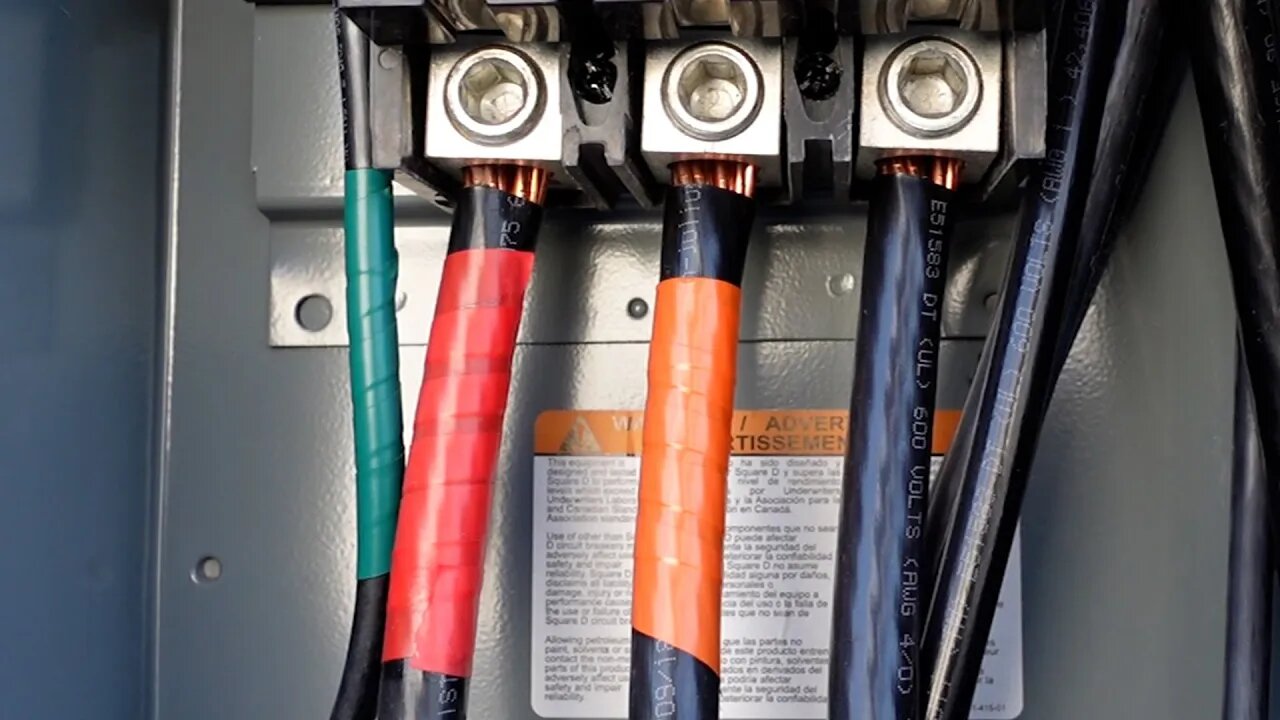Premium Only Content

Electrical Wire Color Coding Used By Electricians
Have you ever wondered why electrical wires and circuits have so many colors? What does it all mean? Let's dig in.
👾🤖PRACTICE EXAMS🤖👾
https://www.electricianu.com/practice-exams
😎👕MERCH👕😎
https://www.electricianu.com/merchandise
📲👥SOCIALS👥📲
Instagram - https://www.instagram.com/electrician_u
Discord - https://discord.gg/7ykYfbh
Facebook Page - https://www.facebook.com/theelectricianu
Facebook Group - https://bit.ly/2tz7eQh
TikTok - https://www.tiktok.com/@electricianu
The primary reason for electrical color coding is to identify all of the different conductors in a circuit. Every conductor in a circuit has a relationship to every other conductor, based on its voltage. Without the ability to know which conductor has what voltage relative to another conductor, a lot of bad things can happen.
An example of this is the green conductor and the black conductor. Each has it's own meaning, which is why each has it's own color. All grounding conductors (conductors meant to bond all metal parts together near electrical equipment) need to be identified so we know that these conductors should not have current on them. They should also have the same voltage as the grounded (neutral) conductor. The black conductor, however, has a much different potential (voltage) than the green and the white conductors. The black is an ungrounded conductor that is intended to always have current on it while under load.
Knowing the difference between these conductors is crucial when wiring an electrical system. Other colors can mean similar things, however the voltage class may be different. For example, working on a 480 volt 3-phase system you may see the colors brown, yellow, and purple - whereas a 208 volt 3-phase system may use black, red, and blue for it's ungrounded conductors.
Keep in mind that voltage is a relationship between two things. Voltage is not something that occurs on one conductor. So having different conductors each taped to identify what it is, allows us, electricians, to know what part of the circuit we're working with, but also what conductors have what voltage in relation to others.
#wirecolors #electrical #voltage
--
Subscribe - https://www.youtube.com/c/electricianu?sub_confirmation=1
IF YOU ENJOY THESE VIDEOS PLEASE SUBSCRIBE AND "LIKE" THEM ABOVE. ALSO CHECK OUT THE ELECTRICIAN U PODCAST ON ITUNES AND SPOTIFY!!
-
 0:58
0:58
Electrician U
1 year agoFISH STICKS! Every electrician needs these!
6.02K -
 58:31
58:31
State of the Second Podcast
14 hours agoHollywood's Closet Gun Owners, LEGAL Exploding Targets, & It's NOT Alec Baldwin's FAULT?!
68 -
 1:00:08
1:00:08
Trumpet Daily
18 hours ago $3.31 earnedTrump vs. Karl-Theodor zu Guttenberg - Trumpet Daily | Feb. 18, 2025
3.22K6 -
![EP. 151 - [your]NEWS & CrossCheck USA - Synergistically UNITED!](https://1a-1791.com/video/fwe1/54/s8/1/x/I/E/P/xIEPx.0kob-small-EP.-151-yourNEWS-and-CrossC.jpg) 55:35
55:35
Kat Espinda
6 days agoEP. 151 - [your]NEWS & CrossCheck USA - Synergistically UNITED!
798 -
 3:08
3:08
UnboxRemedy
3 days agoUNBOXING: CryBaby Crying Again Series (Ep.2)
801 -
 7:04
7:04
Brownells, Inc.
15 hours agoReloading Series: Converting Brass, Featuring 25 GPC
271 -
![[LIVE] Bully | GTA: Vice City | First Playthrough | 8 | Rampage and The Spirit of The Season](https://1a-1791.com/video/fwe1/85/s8/1/W/e/n/4/Wen4x.0kob-small-LIVE-Bully-GTA-Vice-City-Fi.jpg) 3:15:35
3:15:35
Joke65
9 hours ago[LIVE] Bully | GTA: Vice City | First Playthrough | 8 | Rampage and The Spirit of The Season
44K -
 3:27:04
3:27:04
Laura Loomer
11 hours agoEP103: Dems Promote Violent Anti-Trump Protests Nationwide
57.9K15 -
 6:50:08
6:50:08
Fairy Mysterious Adventures
9 hours agoStardew with the Rumble crew #16
44.4K2 -
 1:28:42
1:28:42
Kim Iversen
13 hours agoThe War on Terror Was a Scam? Is Osama Bin Laden Really Dead? SEAL Who Killed Him Breaks It Down.
82.8K152